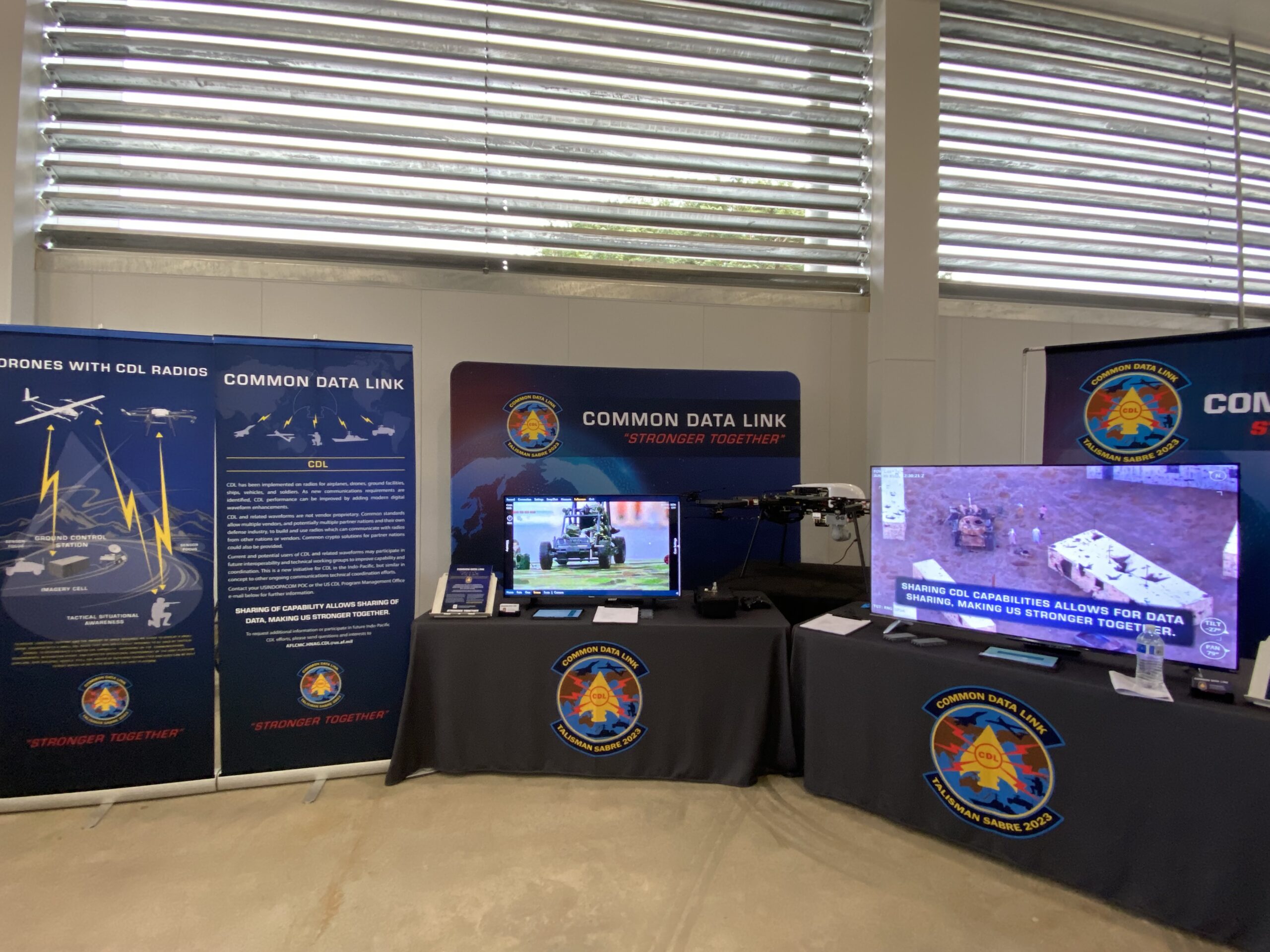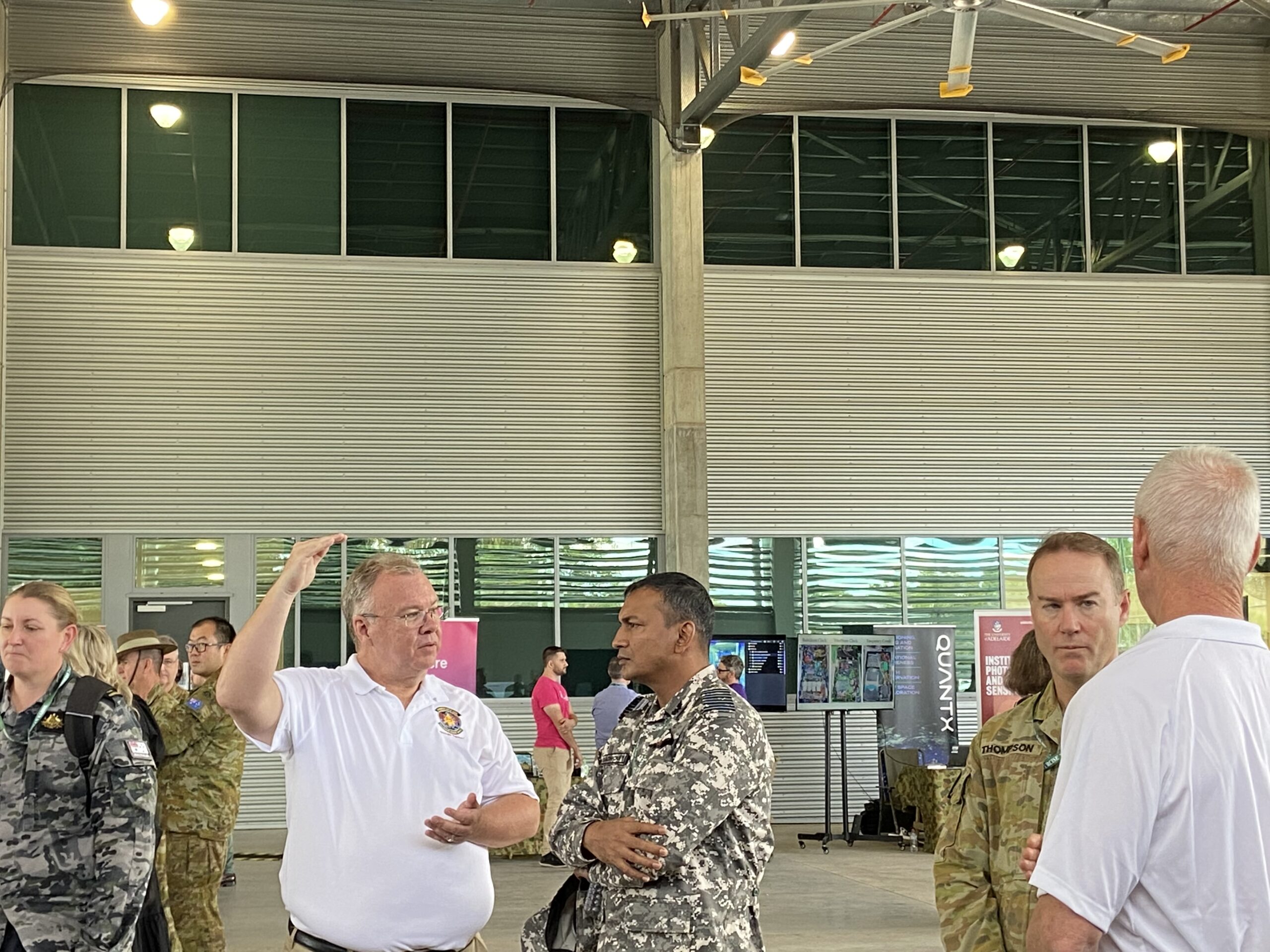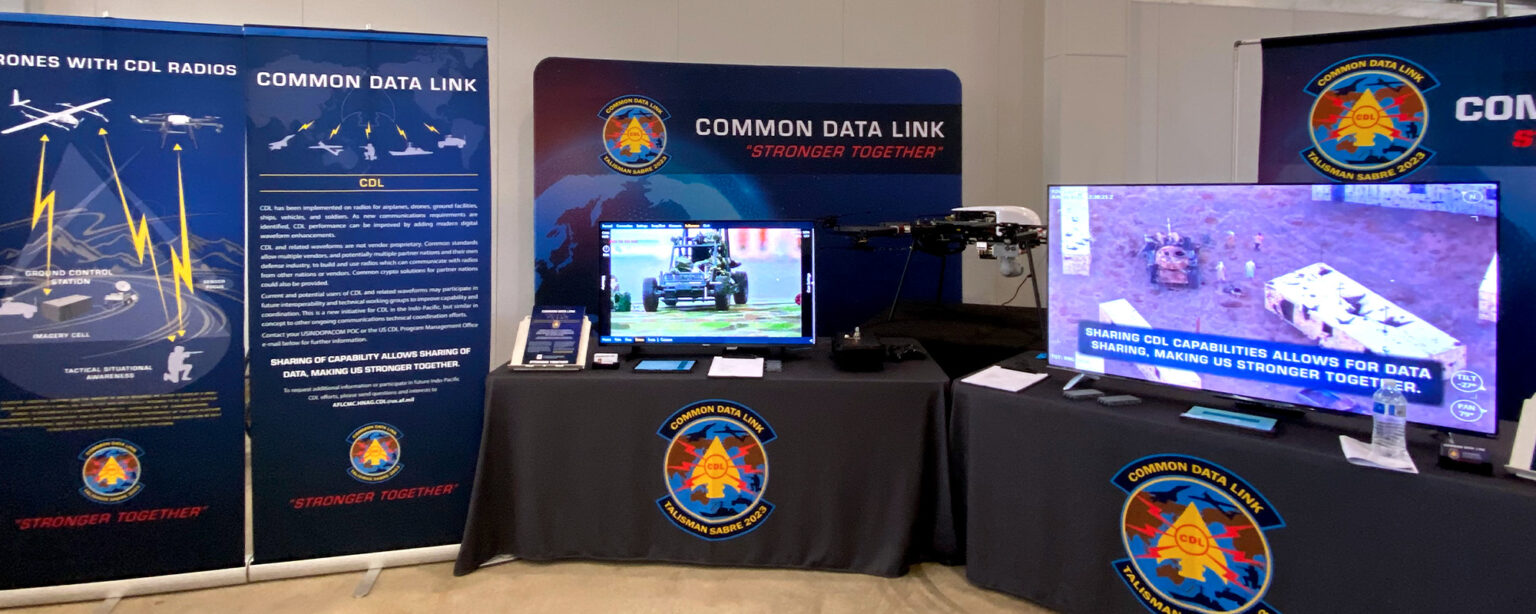Against the backdrop of a windy Australian morning, the camera of a remotely piloted aircraft system zooms in on a military scene, complete with toy soldiers, helicopters and tanks. That same vehicle spent most of the previous week flying over the Queensland countryside, collecting data to support the Common Data Link initiative.
Common Data Link, or CDL, is a digital communications capability developed for common, standardized communication among airborne sensor data systems. It has already been implemented on radios for airplanes, drones, ground facilities, ships, vehicles and soldiers within the United States, and the CDL program hopes to expand its use to United States allies.
“In the military theater, it’s important to have a data link that can be used across a wide variety of radios and systems,” said Derek Wadsworth, a systems integration researcher at Idaho National Laboratory. “Additionally, this commonality promotes competition among vendors, which encourages innovation and advances CDL capabilities while ensuring compatibility.”
Inception of the CDL program
INL has worked closely with the United States Marine Corps to support the CDL program since 2012. When the Air Force introduced the concept of CDL, it quickly found uses with the other services. The Air Force was designated the executive agent for CDL, stood up a Joint CDL Integrated Product Team, and generated a specification for CDL, which provided a detailed outline of the way communications need to be handled between radio software and hardware. These specifications, which have come to be known as the CDL family of waveforms, create connectivity between various sensor platforms and radios.

INL’s role involved taking that specification and soliciting vendors willing to build a small, lightweight radio to the CDL specification. The lab funded four vendors to build prototypes of radios that are CDL compatible and were also the right size to fit on small unmanned aerial vehicles (UAVs).
“The idea is that if everybody builds to that specification, their radios will be interoperable in combat situations, when clear and assured communication is imperative,” said Wadsworth.
Once INL had successful prototypes in hand, the lab’s experts evaluated and tested each of the four systems. Three of these were successful under this more rigorous testing. Those three prototype CDL radios are in various stages of certification. Through INL’s support, lightweight CDL radios have gone from a concept to a prototype to a usable product.
INL supported the CDL program recently at the Launchpad Technology Demonstration Event. This event is part of the Australian Defence Force’s biennial Talisman Sabre exercise, which takes place over several months and is the largest combined training activity between Australia and the United States. This exercise brought together more than 30,000 military personnel from 13 nations.
Sharing the CDL capability
CDL’s effectiveness comes from its widespread adoption, which motivated the program’s participation in the Launchpad Technology Demonstration. Representatives from the United States Marine Corps, INL and contracting team Trinity Bend Solutions partnered with Australia-based company Ninox Robotics to provide a real-time technical demonstration of military hardware coupled with the CDL waveform.
In addition to CDL, other showcased technologies included sensor data to strategically monitor new diseases and how they spread in military communities, oceanographic modeling of weather conditions for amphibious operations, and digital space mapping to enhance situational awareness.

The CDL showcase was favorably received by Talisman Sabre participants, including the Australian chief of Army.
“These military leaders were very interested in the interoperability between radios and devices and the potential benefits of using CDL technology for intelligence operations in addition to defense,” said Wadsworth.
By supporting CDL customers at this event, the CDL and INL teams ensured their partners were aware of this promising new technology and how it enhances defense and intelligence partnerships with the United States.
“The Launchpad event was all about sharing this new waveform and small form factor radio we’ve helped develop with our partners in the Indo-Pacific region,” Wadsworth said. “We want to encourage them to adopt the CDL waveform, because that way, if we end up in theater together, we will be able to communicate effectively and quickly adapt to changing environments. As new technologies gain prominence in the defense space, this kind of communication will be vital to keeping our soldiers, sailors and airmen safe.”





